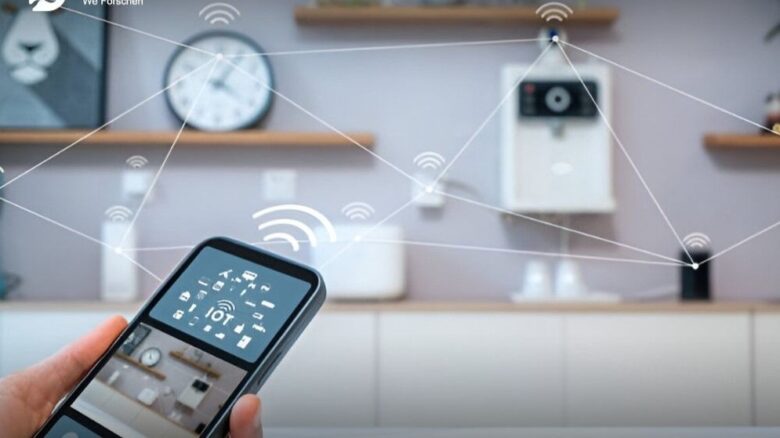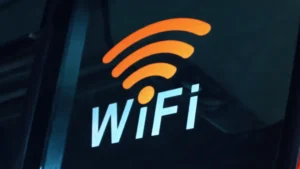Smart technology has become an essential part of our daily lives. It powers our homes, offices, and even healthcare systems. We rely on smart speakers, connected thermostats, AI-powered appliances, and wearable technology for comfort, automation, and efficiency. But our growing reliance on smart technology brings with it a host of problems, such as outages, network issues, and software vulnerabilities. Resolving these issues quickly and effectively is no longer a luxury; it’s a necessity.
As we enter the next decade, repairing smart devices requires new approaches that go beyond simply rebooting them. New systems are more powerful but also more complex, leveraging AI, the Internet of Things, 5G, and cloud connectivity. Knowing how to resolve these issues quickly can keep devices running smoothly, extend their lifespan, and save you time and money. In this article, we explore simple solutions for smart device malfunctions in 2025 and offer practical advice based on real-world experience.
Why Smart Devices Fail:
There are many reasons why smart appliances stop working. Understanding the root cause is essential for solving the problem. Common causes include unstable networks, outdated firmware, cloud service outages, incompatible integrations, and even overreliance on AI automation. For example, a smart refrigerator might stop syncing with a mobile app if the Wi-Fi network is busy or uses outdated security protocols. A smart speaker might also stop responding if multiple voice assistants on the same device are experiencing issues.
As electronic devices become increasingly connected in 2025, even a small issue with one device can cause problems across all of them. Therefore, it’s crucial to locate and isolate the faulty device. By determining whether the problem lies with the network, software, hardware, or user settings, we can reduce downtime and quickly restore normal operation.
Connectivity Issues and Quick Fixes:
One of the most common problems with smart appliances is an inability to connect to the internet. Dropped connections are annoying, but they’re common, whether it’s Wi-Fi dropouts, Bluetooth pairing issues, or interruptions in the Zigbee/Z-Wave signal. The best way to resolve these issues in 2025 is to ensure your devices are connected to a dedicated smart home network that supports Wi-Fi 6E or Wi-Fi 7. This prevents network congestion.
To quickly resolve issues, check your router settings, signal strength, and firewall permissions. Many modern devices have self-diagnosis features that can indicate weak connections. Moving the device closer to the hub or changing the router software often resolves the issue. It’s also important to ensure IPv6 compatibility with your system, as many smart home ecosystems currently only support IPv6.
Charging and Power Issues with Smart Devices:
Power outages or irregular charging are common consumer problems. Smartwatches, fitness trackers, and wireless cameras require powerful batteries to function properly. By 2025, most electronics will feature fast wireless charging and AI-based power management, but problems remain when chargers fail to power devices or devices overheat during use.
Some quick fixes include checking that the charger meets the device’s power requirements, cleaning the charging port to remove debris, and turning off unnecessary, power-hungry background functions. For battery-powered devices, such as smart doorbells and sensors, switching to next-generation rechargeable lithium-polymer batteries can prevent sudden power outages. Restarting the device after a full charge resets the AI-powered battery management system, ensuring optimal performance.
Software Issues and Firmware Updates:
Software issues remain one of the main reasons devices malfunction. Software bugs can cause various issues, from app crashes to voice assistants misunderstanding commands. Often, outdated firmware or a failed upgrade triggers these bugs. Manufacturers typically provide over-the-air (OTA) updates by 2025, but failing to install them correctly can cause your system to crash.
The quickest way to resolve this issue is to manually reload the firmware through the device settings or the associated app. If the problem persists, uninstalling and reinstalling the operating system may resolve it. Clearing the cache can also help free up memory. By connecting your device to a cloud backup, you can prevent the loss of your personalized settings during a reset. It’s also important to keep your AI assistant and associated app up to date, as older apps may be incompatible with your device’s firmware, potentially causing functionality issues.
Integration and Compatibility Issues:
As ecosystems like Google Home, Apple HomeKit, and Amazon Alexa continue to grow, interoperability issues remain a significant concern. Users often encounter various problems connecting new devices across different platforms. For example, a smart light bulb might work well with Alexa but not with Apple HomeKit due to API mismatches.
By 2025, using devices that support the Matter protocol will be the fastest way to resolve issues. These devices will be compatible with all other devices. If integration issues persist, check the device’s certification status and update the Control Center to ensure everything is working properly. Direct downloads of compatibility patches are now available from many device manufacturers’ support websites. Restarting the integration process by uninstalling and reinstalling the device often resolves issues and ensures smooth operation across all platforms.
Voice Assistant and AI Recognition Issues:
AI assistants are smarter than ever, but they can still make mistakes, misinterpret information, and fail to respond. These issues are especially frustrating when multiple devices need to be controlled via voice commands. In 2025, these problems will often arise when devices use too many similar trigger words or when AI processing is interrupted by background noise.
The quickest way to resolve these issues is to retrain the AI assistant in the app settings so it can learn the user’s new speech patterns. Placing the device in a quieter location, upgrading the voice model, and choosing a different trigger word can also improve accuracy. Furthermore, disabling inter-device interference settings can prevent multiple assistants from launching simultaneously. With smarter AI integration, adjusting personalization settings is now essential for flawless speech recognition.
Conclusion:
In 2025, repairing smart devices will require a mix of old and new approaches to adapt to new technologies. Quick fixes now depend on leveraging new technologies and syncing old ones, including maintaining stable Wi-Fi 7 networks and using the Matter protocol for compatibility. Resetting, upgrading, recalibrating, and optimizing devices becomes unnecessary when all other methods fail. These are your first steps to ensuring smooth device operation.
By understanding common causes of device failure—such as connectivity issues, power outages, software bugs, integration errors, and AI errors—we can reduce downtime and ensure devices are always functioning properly. Smart devices are an essential part of our daily lives, so learning how to fix them can help keep our homes and workplaces running smoothly and worry-free. In this fast-paced digital age, being able to resolve issues quickly isn’t just a positive; it’s also a sign of digital resilience.
FAQs:
1. Why do smart devices often disconnect from Wi-Fi?
Smart devices often disconnect due to excessive network traffic, an outdated router, or incorrect security settings. Switching to Wi-Fi 6E/7 and ensuring the device is in the correct environment can resolve most issues.
2. How often should I update my smart device’s firmware?
It’s best to perform firmware updates as soon as possible, as they correct bugs, add security features, and improve performance. These are all crucial for smooth device operation.
3. What should I do if my smart assistant doesn’t understand what I say?
Update the assistant app, retrain the speech recognition engine, and reduce background noise. Setting a different wake word for each device can also help ensure clear speech understanding.
4. Is my smart device no longer working due to a low battery?
Yes, a low or empty battery can cause a device to unexpectedly shut down, disconnect, or respond slowly. You can resolve most issues by using a suitable charger and replacing the batteries when they run out.
5. How do I ensure new devices are compatible with my ecosystem?
Always ensure the device supports the Matter protocol, update your smart home controller, and check if the device is certified for your platform (Google Home, Alexa, or Apple HomeKit).



